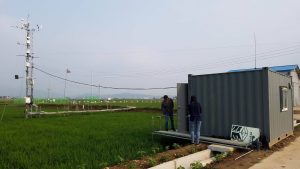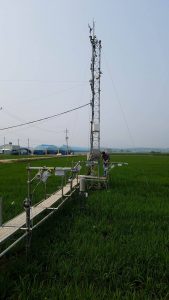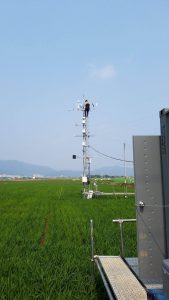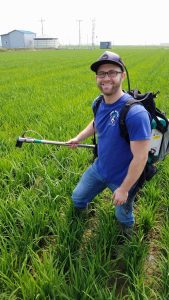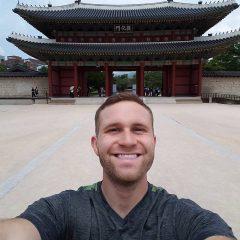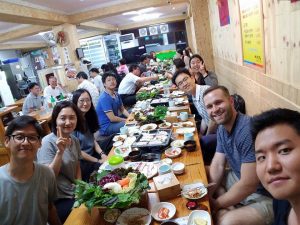Last week I got the opportunity to visit my host lab’s research site. The journey took about an hour and forty five minutes to get to by car. It was fairly close to North Korea, actually. My mom wasn’t too thrilled to hear that. The drive back took over three hours! That was all thanks to rush hour traffic in Seoul.
Similar to my sites back in Oklahoma, their site has a very large flux tower and several other hyperspectral sensors. However, this site is different than mine because it is rice and not winter wheat or grassland. Their tower is about four times larger than ours. You can see in the picture that Hyungsuk has to harness himself to the tower while he is working on it in case he falls.
So, why collect all this data? Well the model that my professor has developed uses satellite data and reanalysis meteorological data to estimate CO2 and H20 fluxes between the land and atmosphere. Key word is “estimate”. Since it is impossible/costly to measure these fluxes directly (with flux towers), the model can come in handy because it can estimate these fluxes on a 1 km grid. There are errors in these estimates, hence the word, so we need to know how much error is coming from the data that is being input into the model versus the error in the equations the model uses. The most likely answer is both. But we want to try and eliminate as much error and uncertainty as possible. Therefore, we use the data collected at our site to input into the model (instead of the reanalysis and satellite data). If the model then produces ~the same fluxes as what we measure with the towers then we know the equations in the model are doing their job and we have to start pointing the finger towards the input data. But if the model produces different fluxes then the equations are the culprit.
Hopefully we can find out how well this model can determine these fluxes over the Southern Great Plains of the U.S. by the end of my time here. Then this can help determine whether this model can be used for applications, such as drought prediction, crop yield/health, water resources management, and a multitude of other realms.
